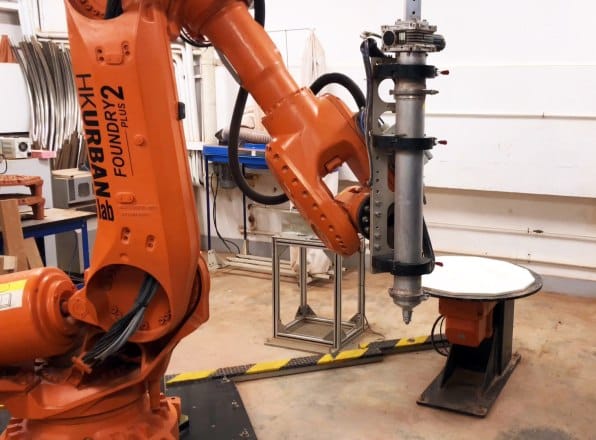The Terra-cotta ceramics have been used for thousands of years, but the special application in the 21st century has given this material a completely new use.
Marine scientists and architects from the Swire Institute of Marine Science (SWIMS) of the University of Hong Kong and their robotic manufacturing laboratory in the School of Architecture are dedicated to the production of 3D printed terracotta tiles. The result is fascinating lines and organic vortices of negative space that look like burnt orange topographic maps and mimic the natural form of corals themselves.
Green Power, an environmental organization based in Hong Kong, said that the number of coral reefs in Hong Kong has decreased over the past few years. In fact, in the past ten years, the coral population has decreased by 80% in an area on two islands in Saigon. This is disturbing because coral reefs are some of the most diverse and valuable ecosystems on the planet; according to the National Oceanic and Atmospheric Administration (NOAA), they “support more species per unit area than any other marine environment,” including millions of undiscovered species.
Green Power attributed the decline to global warming, pollution, fishing nets, and water sports. Team member Vriko Yu said that due to red tides in 2015 and 2016, researchers at the University of Hong Kong also cited biological erosion (gradual deterioration of coral habitats), coral bleaching, and partial deaths (basically, species quickly died in a short period of time) reason. This is where man-made or artificial reefs enter – they help restore lost coral populations by reintroducing an environment suitable for re-growth and they are made up of everything from deliberately submerged shipwrecks to concrete sculptures.

Team leader Christian Lange said that the robotic 3D printing process has unique advantages in the design and production of artificial reefs. By allowing the team to create large-scale works in a short period of time, it makes production easier and more efficient. This also enabled the team to produce tiles with different designs and functions, which is not possible with typical molds. To this end, the research team 3D printed terracotta clay into a reef tile pattern and burned it to 2057 degrees Fahrenheit to produce the 128 tiles made so far. Each tile is only two feet in diameter. Why use terracotta warriors? Team member Dave Baker said that it is highly porous and has a “pretty surface micro-texture” that can lock in marine life and is an environmentally friendly alternative to traditional materials such as cement or metal.

Lange said: “Although you can use other methods (such as making double-sided molds) to produce these tiles, because the tile design is very three-dimensional, it will be very complicated.” “The advantage of 3D printing is that it can be produced more economically. Objects and parts. But its most powerful advantage is that it can print each object with a different design without increasing the cost.” In this way, they can design blocks with different functions without generating a lot of extra costs.
Although all coral tiles are the same in this preliminary study, the team will use different designs in the next iteration to figure out how they affect the species. These designs can also be specific to the environment and underwater conditions in which they are placed. For example, the research team designed these tiles to prevent sediment accumulation, which is a major problem in Hong Kong waters.
Because the tiles are interlocked, they look as if the seafloor has been repaved and refurbished. in some sense. They said that the ceramic tile design of the coral reef provides a “complex structural foundation”, which makes the coral fragments have many corners and gaps to anchor, and prevents the accumulation of sediment, which is the main threat to the coral.
In July this year, the team placed reef bricks seeded with coral fragments in about 430 square feet of three locations in Hong Kong’s Hoi Ha Wan Marine Park. Researchers will monitor the growth of corals on tiles in the next two years. This is just the beginning of the project: the team plans to develop new tile designs and further expand the seabed repair capacity in the area.

